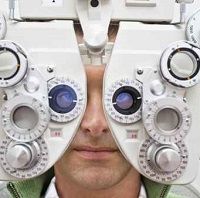Diabetic Macular Edema Drugs: Do the Prices Outweigh the Benefits?
Choosing the right drug can be a difficult decision, as cost-effectiveness and positive outcomes vary between aflibercept, bevacizumab, and ranibizumab.

Drug options for the treatment of diabetic macular edema (DME) include aflibercept, bevacizumab, and ranibizumab. Choosing the right drug can be a difficult decision, as cost-effectiveness and positive outcomes vary between the three.
Anti-vascular endothelial growth factor (VEGF) medicines have provided hope for patients suffering from an incurable complication of diabetes. However, there are various factors to take into consideration before picking a treatment route. A new study published in JAMA Ophthalmology evaluated the incremental cost-effectiveness ratios (ICER) for the three treatments and found that the drug associated with the best health outcomes is also one of the least sensible on the wallet.
The study looked at 624 patients with DME — 209 on aflibercept (2.0 mg), 207 on bevacizumab (1.25 mg), and 208 on ranibizumab (0.3 mg). The average participant was about 61 years old; nearly half of the patients were female and 65.5% were Caucasian.
“The ICERs for all trial participants and subgroups with baseline vision of approximate Snellen equivalent 20/32 to 20/40 (better vision) and baseline vision of approximate Snellen equivalent 20/50 or worse (worse vision),” the report said.
After one year of follow-up, the results showed ICER and quality-adjusted life-year (QALY) for each of the medications.
- Related: Combination Treatment Shows Promise in Diabetic Macular Edema
Compared to the bevacizumab group, the ICERs for aflibercept and ranibizumab were $1,110,000 and 1,730,000 per QALY, respectively. Over 10 years, the drugs were $349,000 and 603,000 per QALY, respectively.
When compared with ranibizumab, the ICER of aflibercept was $648,000 per QALY at one year and $203,000 per QALY at 10 years.
Notably, compared to bevacizumab, the ICERs of aflibercept and ranibizumab were $287,000 and $817,000 per QALY, respectively, for those with worse baseline vision.
“In eyes with decreased vision from DME, treatment costs of aflibercept and ranibizumab would need to decrease by 69% and 80%, respectively, to reach a cost-effectiveness threshold of $100,000 per QALY compared with bevacizumab during a 10-year horizon;” the authors explained, “for the subgroup with worse baseline vision, the costs would need to decrease by 62% and 84%, respectively.”
To put all of this data in simpler terms — aflibercept and ranibizumab are 31 and 20 times more expensive than bevacizumab. So unless prices drop dramatically, aflibercept and ranibizumab are not cost-effective treatments for DME compared to bevacizumab.
The problem here is that aflibercept has proven to be the most effective out of the three treatments — especially for those with worse baseline vision. Therefore, healthcare providers and patients have various factors to take into consideration before choosing a DME treatment.
Also on MD Magazine >>> Ranibizumab Reduces Retinopathy Severity in Patients with Diabetic Macular Edema